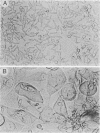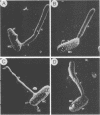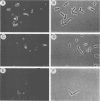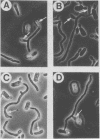Abstract
Cells of Candida albicans strain WO-1 and related strains switch frequently and reversibly between a white-colony-forming unit (white phase) and a gray-colony-forming unit (opaque phase). Cells in the budding white phase exhibit the usual smooth round phenotype observed in other C. albicans strains, but cells in the budding opaque phase exhibit a unique elongate shape with surface pimples or protrusions. In this study, it was demonstrated that opaque cells formed hyphae at low to negligible levels in suspension cultures but could be induced to form hyphae at high levels when anchored to the chamber wall of a perfusion chamber or to a monolayer of human skin epithelial cells. Variability in the proportion of hyphae formed between experiments appeared to be due to variability between individual opaque clones. The hyphae formed by opaque cells were morphologically identical to hyphae formed by white cells (i.e., they were devoid of pimples or protrusions and exhibited the same shape and septal locations). They also did not stain with an opaque-specific antiserum which differentially stained opaque budding cells in a punctate fashion. However, when stimulated to form buds, opaque hyphae formed opaque-shaped daughter buds, demonstrating that although they are morphologically similar to hyphae formed by white cells, they are genetically opaque.
Full text
PDF
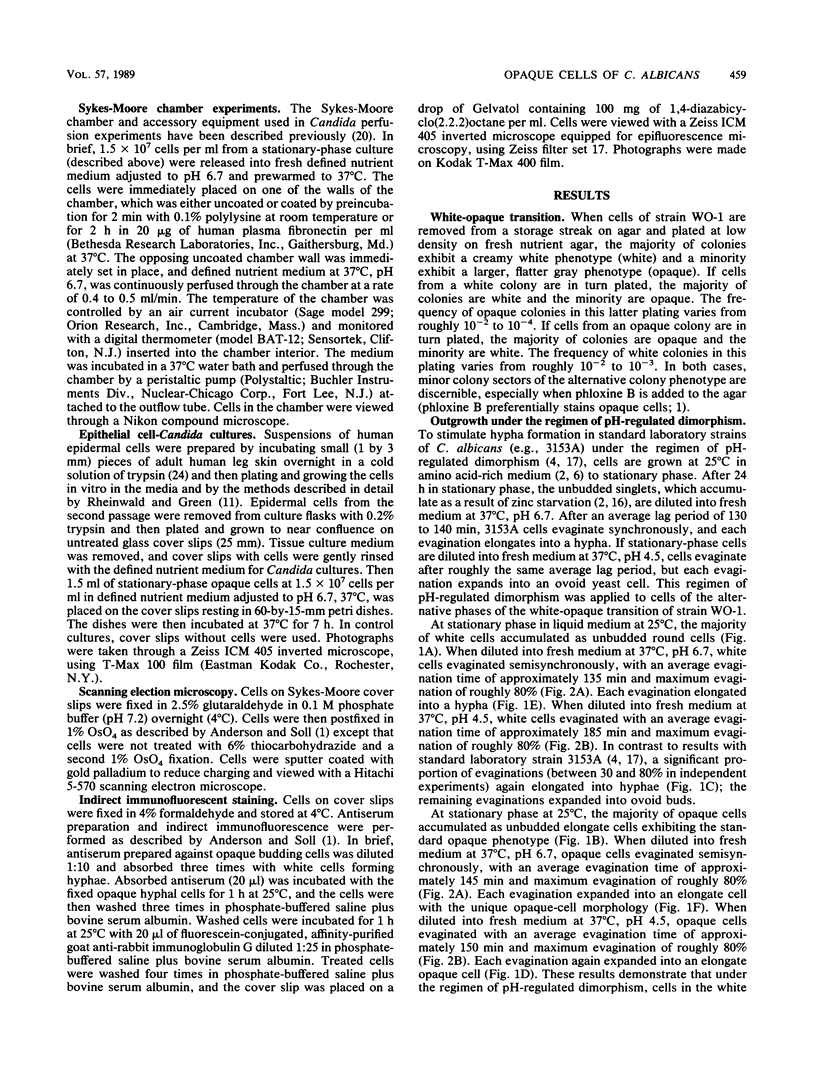
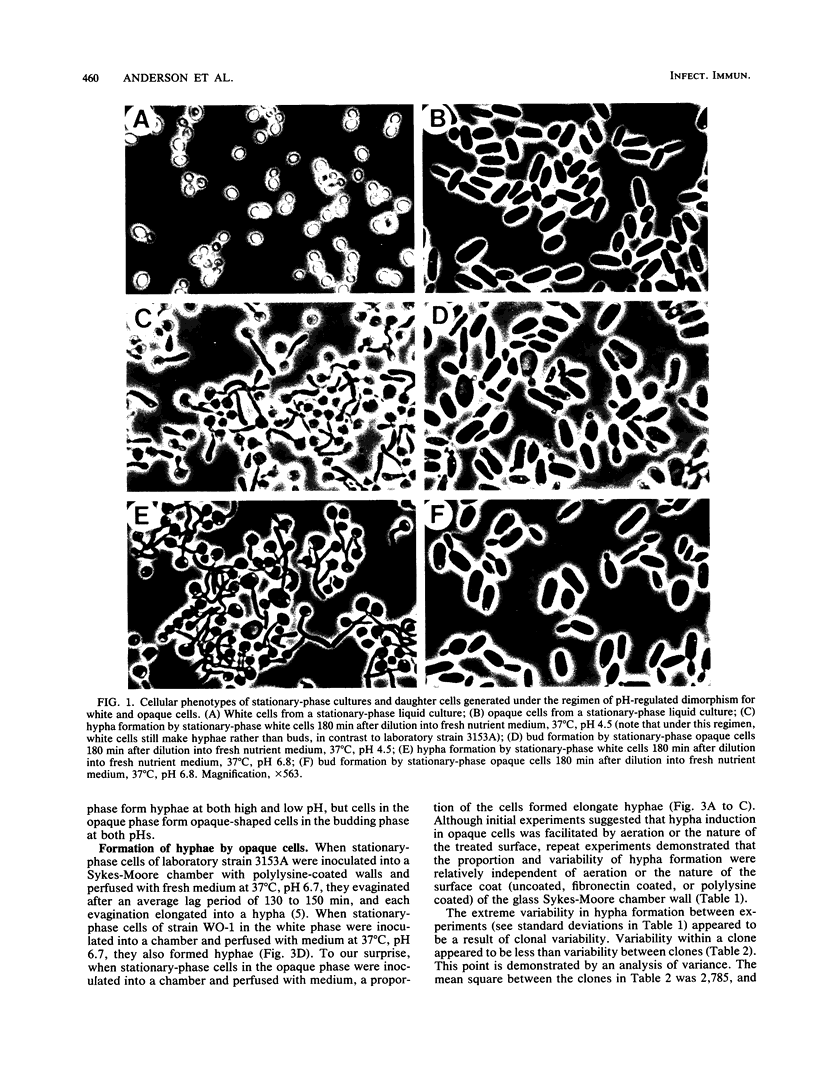
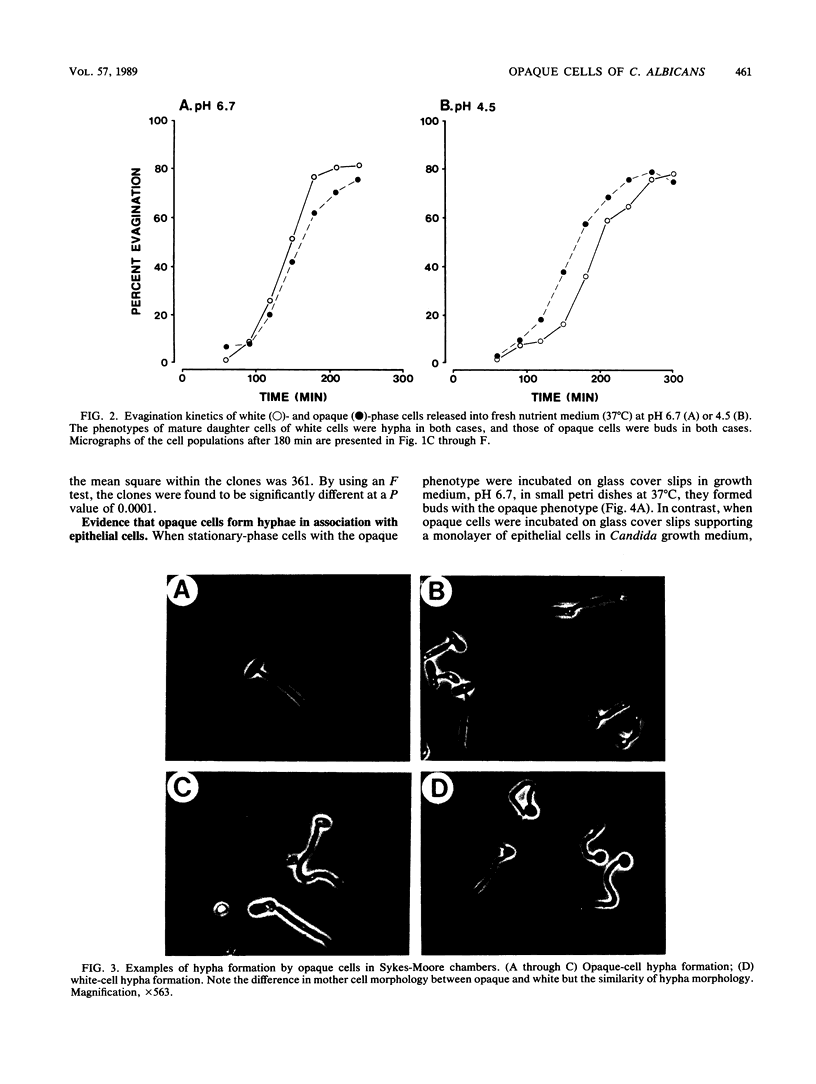
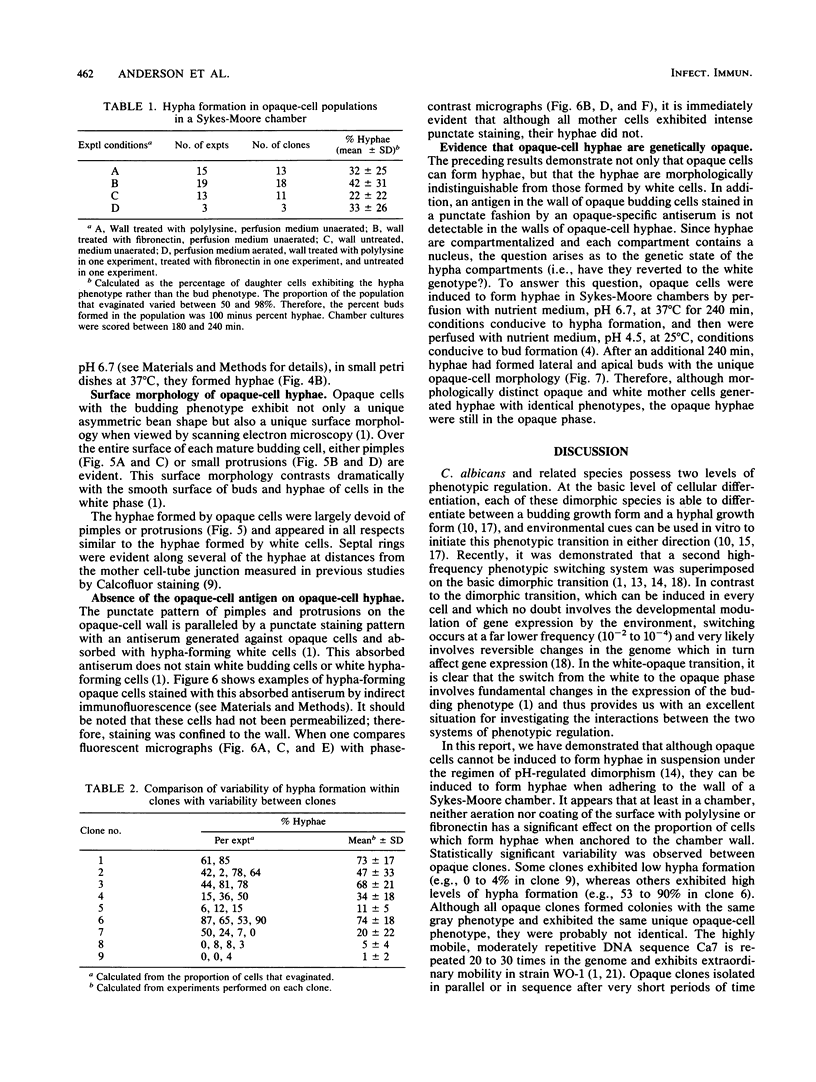

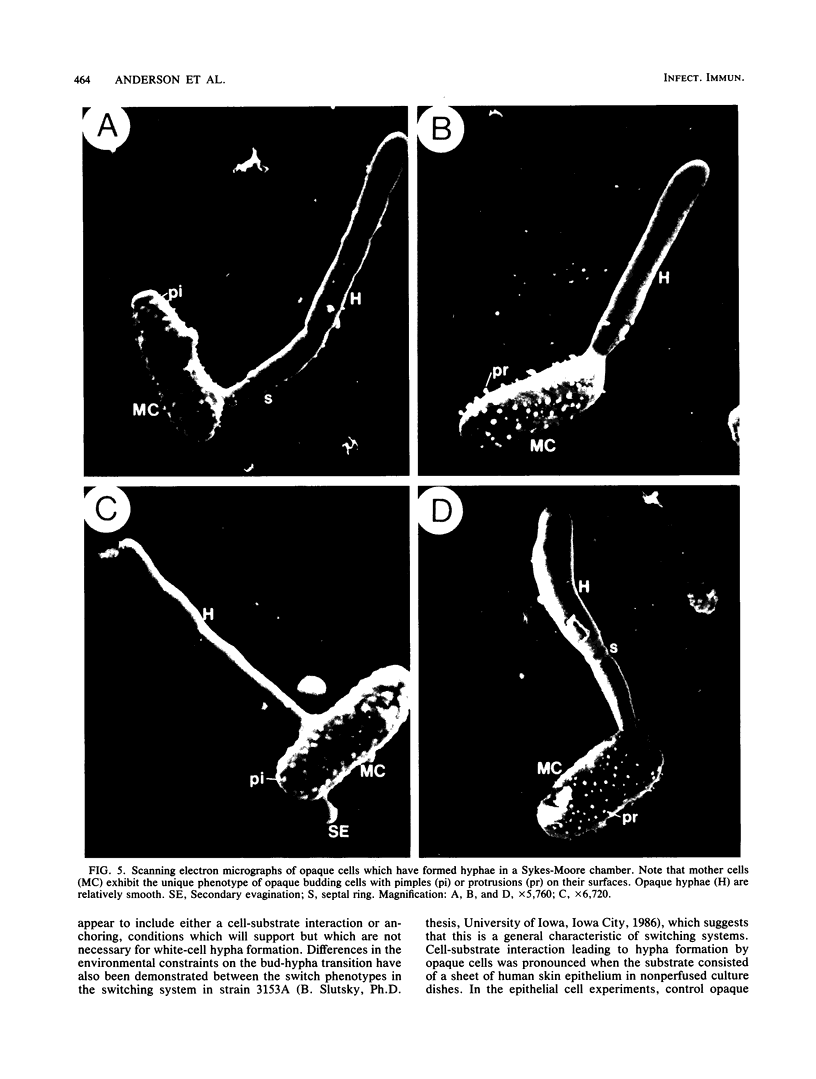
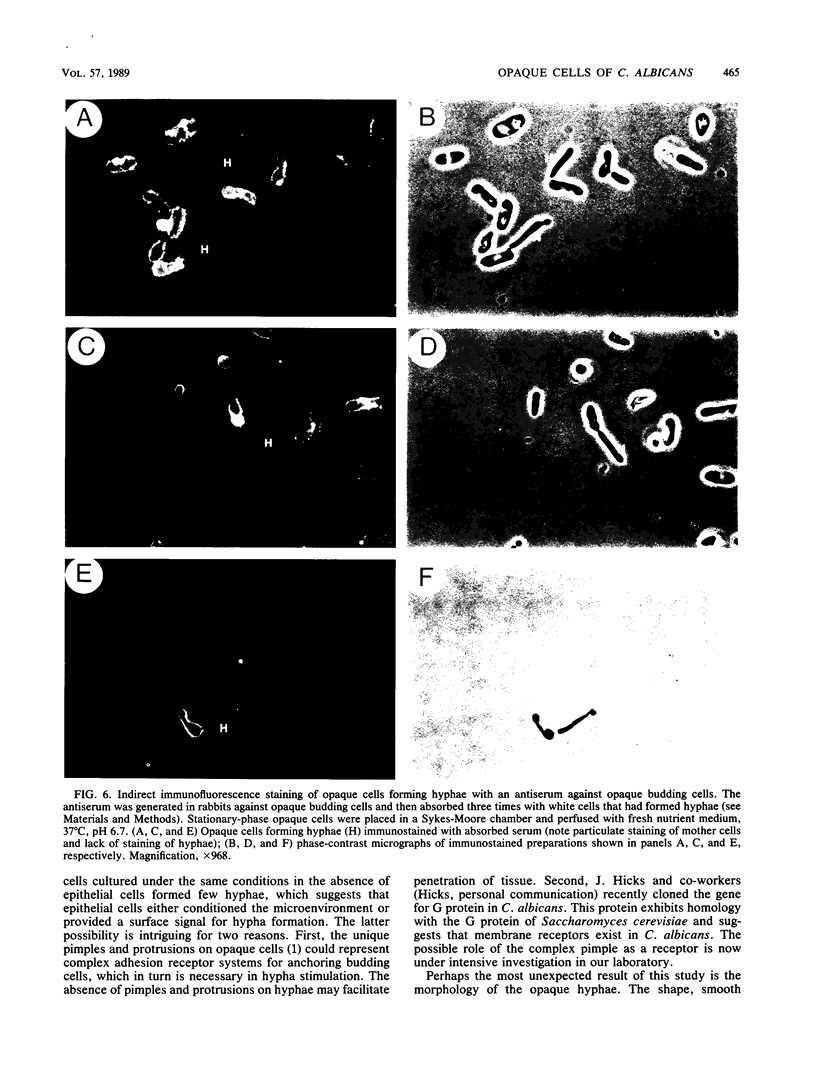

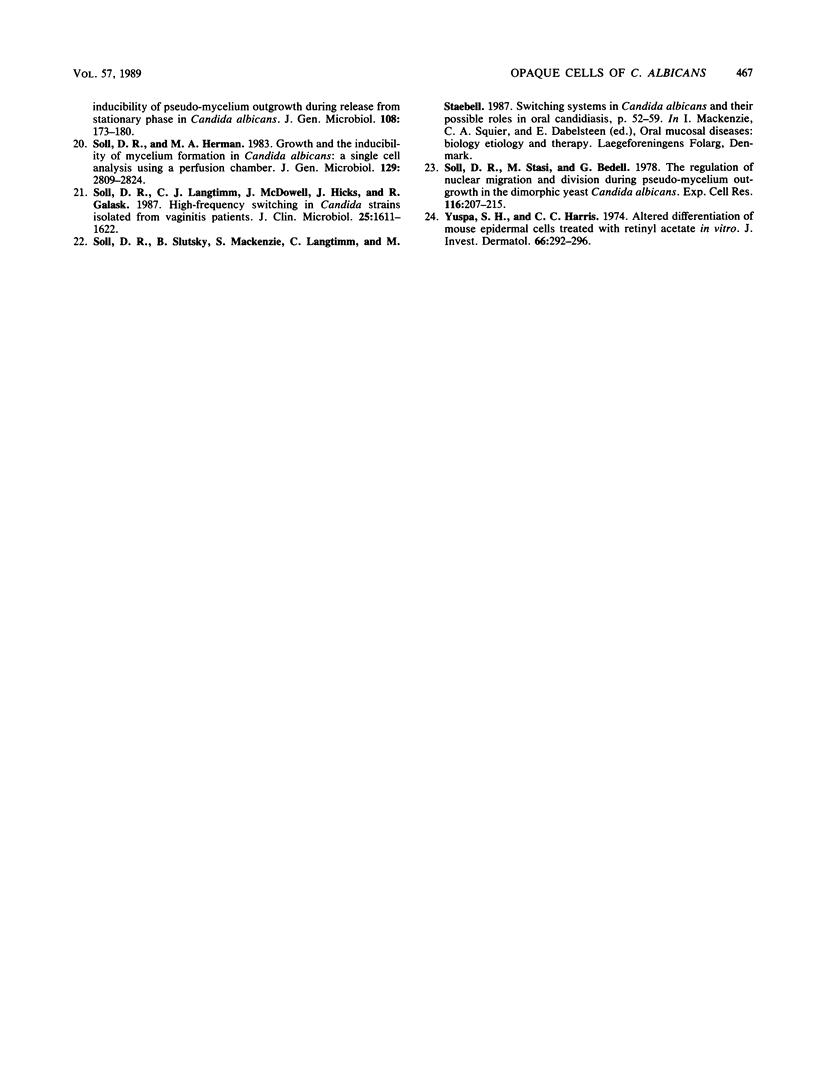
Images in this article
Selected References
These references are in PubMed. This may not be the complete list of references from this article.
- Anderson J. M., Soll D. R. Unique phenotype of opaque cells in the white-opaque transition of Candida albicans. J Bacteriol. 1987 Dec;169(12):5579–5588. doi: 10.1128/jb.169.12.5579-5588.1987. [DOI] [PMC free article] [PubMed] [Google Scholar]
- Bedell G. W., Soll D. R. Effects of low concentrations of zinc on the growth and dimorphism of Candida albicans: evidence for zinc-resistant and -sensitive pathways for mycelium formation. Infect Immun. 1979 Oct;26(1):348–354. doi: 10.1128/iai.26.1.348-354.1979. [DOI] [PMC free article] [PubMed] [Google Scholar]
- Brown L. A., Chaffin W. L. Differential expression of cytoplasmic proteins during yeast bud and germ tube formation in Candida albicans. Can J Microbiol. 1981 Jun;27(6):580–585. doi: 10.1139/m81-088. [DOI] [PubMed] [Google Scholar]
- Buffo J., Herman M. A., Soll D. R. A characterization of pH-regulated dimorphism in Candida albicans. Mycopathologia. 1984 Mar 15;85(1-2):21–30. doi: 10.1007/BF00436698. [DOI] [PubMed] [Google Scholar]
- Elgjo K., Hennings H., Michael D., Yuspa S. H. Natural synchrony of newborn mouse epidermal cells in vitro. J Invest Dermatol. 1976 May;66(5):292–296. doi: 10.1111/1523-1747.ep12482235. [DOI] [PubMed] [Google Scholar]
- Herman M. A., Soll D. R. A comparison of volume growth during bud and mycelium formation in Candida albicans: a single cell analysis. J Gen Microbiol. 1984 Sep;130(9):2219–2228. doi: 10.1099/00221287-130-9-2219. [DOI] [PubMed] [Google Scholar]
- Lee K. L., Buckley H. R., Campbell C. C. An amino acid liquid synthetic medium for the development of mycelial and yeast forms of Candida Albicans. Sabouraudia. 1975 Jul;13(2):148–153. doi: 10.1080/00362177585190271. [DOI] [PubMed] [Google Scholar]
- Manning M., Mitchell T. G. Morphogenesis of Candida albicans and cytoplasmic proteins associated with differences in morphology, strain, or temperature. J Bacteriol. 1980 Oct;144(1):258–273. doi: 10.1128/jb.144.1.258-273.1980. [DOI] [PMC free article] [PubMed] [Google Scholar]
- Mitchell L. H., Soll D. R. Commitment to germ tube or bud formation during release from stationary phase in Candida albicans. Exp Cell Res. 1979 Apr;120(1):167–179. doi: 10.1016/0014-4827(79)90547-0. [DOI] [PubMed] [Google Scholar]
- Rheinwald J. G., Green H. Serial cultivation of strains of human epidermal keratinocytes: the formation of keratinizing colonies from single cells. Cell. 1975 Nov;6(3):331–343. doi: 10.1016/s0092-8674(75)80001-8. [DOI] [PubMed] [Google Scholar]
- Rikkerink E. H., Magee B. B., Magee P. T. Opaque-white phenotype transition: a programmed morphological transition in Candida albicans. J Bacteriol. 1988 Feb;170(2):895–899. doi: 10.1128/jb.170.2.895-899.1988. [DOI] [PMC free article] [PubMed] [Google Scholar]
- Slutsky B., Buffo J., Soll D. R. High-frequency switching of colony morphology in Candida albicans. Science. 1985 Nov 8;230(4726):666–669. doi: 10.1126/science.3901258. [DOI] [PubMed] [Google Scholar]
- Slutsky B., Staebell M., Anderson J., Risen L., Pfaller M., Soll D. R. "White-opaque transition": a second high-frequency switching system in Candida albicans. J Bacteriol. 1987 Jan;169(1):189–197. doi: 10.1128/jb.169.1.189-197.1987. [DOI] [PMC free article] [PubMed] [Google Scholar]
- Soll D. R., Herman M. A. Growth and the inducibility of mycelium formation in Candida albicans: a single-cell analysis using a perfusion chamber. J Gen Microbiol. 1983 Sep;129(9):2809–2824. doi: 10.1099/00221287-129-9-2809. [DOI] [PubMed] [Google Scholar]
- Soll D. R., Langtimm C. J., McDowell J., Hicks J., Galask R. High-frequency switching in Candida strains isolated from vaginitis patients. J Clin Microbiol. 1987 Sep;25(9):1611–1622. doi: 10.1128/jcm.25.9.1611-1622.1987. [DOI] [PMC free article] [PubMed] [Google Scholar]
- Soll D. R., Stasi M., Bedell G. The regulation of nuclear migration and division during pseudo-mycelium outgrowth in the dimorphic yeast Candida albicans. Exp Cell Res. 1978 Oct 1;116(1):207–215. doi: 10.1016/0014-4827(78)90077-0. [DOI] [PubMed] [Google Scholar]
- Soll D. R. The regulation of cellular differentiation in the dimorphic yeast Candida albicans. Bioessays. 1986 Jul;5(1):5–11. doi: 10.1002/bies.950050103. [DOI] [PubMed] [Google Scholar]
- Soll D. R. The role of zinc in Candida dimorphism. Curr Top Med Mycol. 1985;1:258–285. doi: 10.1007/978-1-4613-9547-8_10. [DOI] [PubMed] [Google Scholar]





